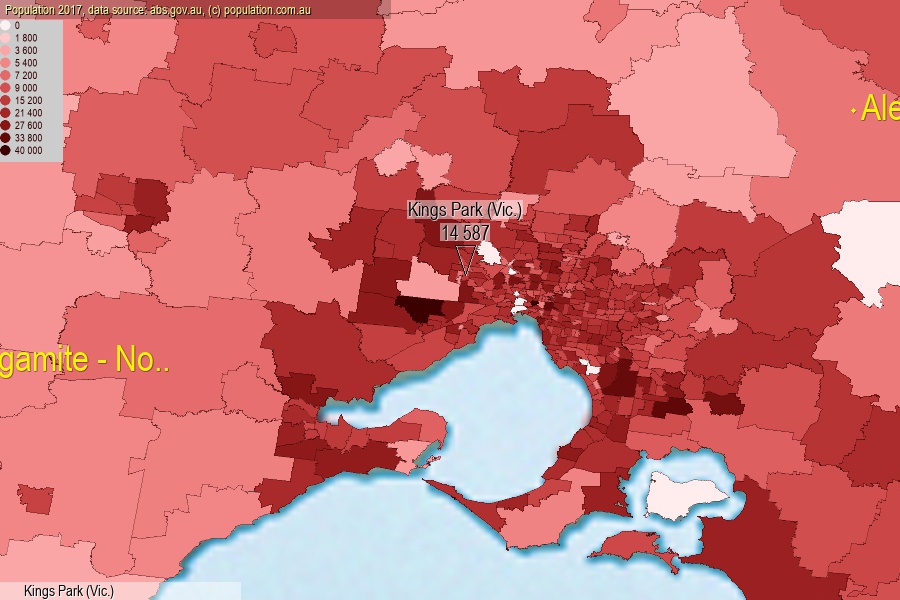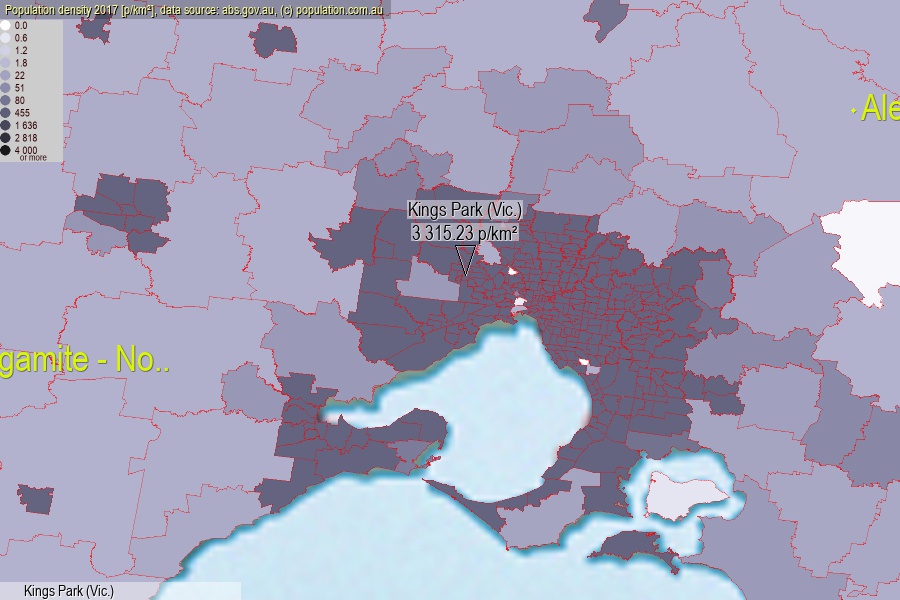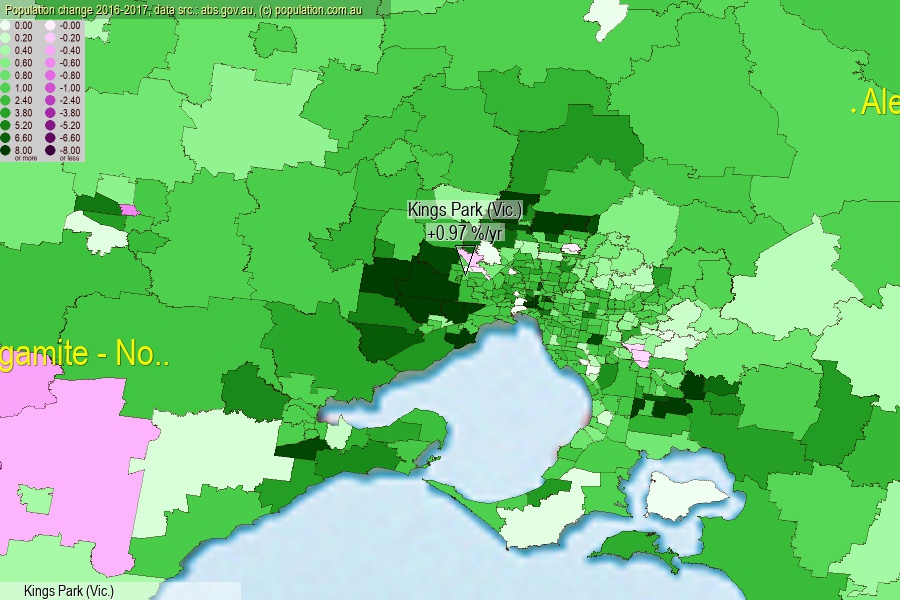 population.com.au
population.com.auLast official estimated population of Kings Park (Vic.) (as Statistical Area Level 2) was 14 587 people (on 2017-06-30)[2]. This was 0.06% of total Australian population and 0.227% of VIC population. Area of Kings Park (Vic.) is 4.40 km², in this year population density was 3 315.23 p/km² . If population growth rate would be same as in period 2016-2017 (+0.97%/yr), Kings Park (Vic.) population in 2025 would be 15 757. [0]



Click to enlarge. Kings Park (Vic.) is located in the center of the images.
Population [people], population density [p./km²] and population change [%/year] [2]
View borders » (new window) [4]
[1991-1992] -0.69 %/Yr.
[1992-1993] -0.59 %/Yr.
[1993-1994] -0.85 %/Yr.
[1994-1995] -0.78 %/Yr.
[1995-1996] -0.60 %/Yr.
[1996-1997] -0.72 %/Yr.
[1997-1998] -0.76 %/Yr.
[1998-1999] -0.79 %/Yr.
[1999-2000] -1.26 %/Yr.
[2000-2001] -1.48 %/Yr.
[2001-2002] -0.96 %/Yr.
[2002-2003] -1.67 %/Yr.
[2003-2004] -1.08 %/Yr.
[2004-2005] -1.35 %/Yr.
[2005-2006] -0.95 %/Yr.
[2006-2007] -0.87 %/Yr.
[2007-2008] -0.40 %/Yr.
[2008-2009] -0.46 %/Yr.
[2009-2010] -0.31 %/Yr.
[2010-2011] -0.38 %/Yr.
[2011-2012] +0.01 %/Yr.
[2012-2013] +0.07 %/Yr.
[2013-2014] +0.14 %/Yr.
[2014-2015] +0.26 %/Yr.
[2015-2016] +0.51 %/Yr.
[2016-2017] +0.97 %/Yr.
[0] Calculated with linear interpolation from officially estimated population
[1] Read more about SA2 and Australian Statistical Geography Standard (ASGS) on abs.gov.au
[2] Population data from Australian Bureau of Statistics (Population and density: 2017; change: 2016-2017)
[3] Digital Boundaries: Australian Statistical Geography Standard (ASGS) 2016.
[4] Border coordinates are simplifyed using Ramer-Douglas-Peucker algorithm.